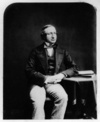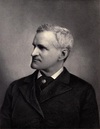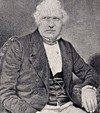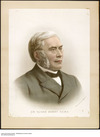Lorimier de la Rivière. Governor Frontenac [Buade*] added to the penalty by relieving the two of their
Frontenac (Kingston, Ont.). He made several trips to the pays d’en haut, including one in 1729 when he led the provisioning convoy from Montreal into Michilimackinac (Mackinaw City, Mich
imprisonments, as he was moved in turn to forts Niagara (near Youngstown, N.Y.), Toronto, and Frontenac (Kingston, Ont.), then to Montreal and Quebec. In Montreal on 19 June 1751 he was examined by
them by the governor of the colony, Buade de Frontenac, that they encroached on the
. The character depicted is not La Salle, but Parkman. Frontenac [Buade*], the bombastic old courtier and
. . . , suivi des relations officielles de Frontenac, Monseignat et Juchereau de Saint-Ignace . . . (Montréal, 1898), Archange Godbout, “Paradis,” SGCF Mémoires, I (1944), 30–33. Ernest
Aloigny de La Groye. For ten years Papineau served faithfully under Frontenac [Buade*] and
from Fort Frontenac (Kingston) on Lake Ontario to Percé. He returned to France in the autumn of 1677.
In 1683 he was guardian of the convent at Rouen
Buade* de Frontenac that he was “a good-for-nothing weakling since he needed a horse to carry him.” In another encounter with the governor recorded by
Buade de Frontenac; b. c. 1650; d. 1698.
Ourehouare was a chief of the Cayuga villages which had been established on the Bay of
Buade* de Frontenac as a lifelong ally of the French, and warned him privately against the treachery of the Foxes and Mascoutens, whose spokesmen were also present. A few days later Iroquois were
and Fernow), III, 121-25; IX, 236–39, 247, 255–58, 362, 384–86, 388–93. Eccles, Frontenac, 169–70, 189. Lanctot, Histoire du Canada, II, 118, 142.
.
Ononwarogo recruited Indians to accompany Lieutenant-Colonel John Bradstreet* against Fort Frontenac (now Kingston, Ont.) in the summer of 1758
Ontario up to the time of the launching of the steamship Frontenac, at Ernesttown, Ontario, 7th September, 1816,” OH, 23 (1926): 33–44. C. H. J. Snider, “Mighty Maltese of
and the French commanders of Fort Frontenac (Kingston, Ont.). His supposed friendship with the British did not, however, prevent him from accepting from Governor Vaudreuil
to Governor Buade* de Frontenac, in which he praised his Indians and drew the governor’s attention to the efforts
wife settled in Valcartier. Although he would offer paintings and prints for sale at the Château Frontenac and two other commercial venues in Quebec City, he viewed Toronto, his wife’s former home, as a
), 1885–1903, and Canadian White Ribbon Tidings (London, Ont.), 1904–5; RG 80-5, no.1879-009463. NA, RG 31, C1, 1881, Kingston, Frontenac
steamboat Frontenac. The Frontenac was not the first steamboat in the Canadas; that honour goes to the Accommodation, constructed in Montreal in 1809 for John
which his father had prospered, was traditionally conservative. Mowat himself had stood to arms in the Frontenac militia during the rebellion of 1837–38. In 1857 his old principal, Macdonald, was leader










